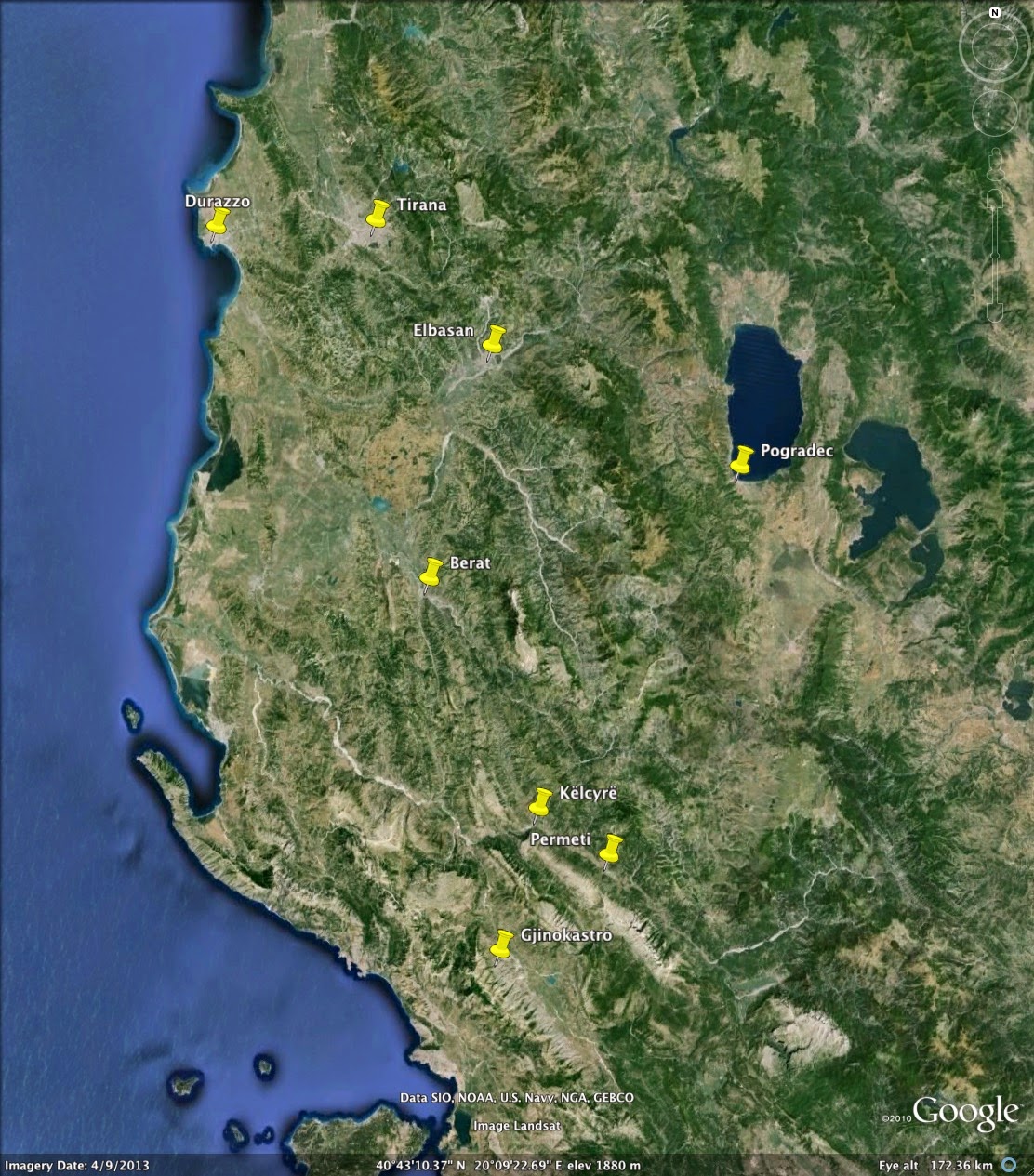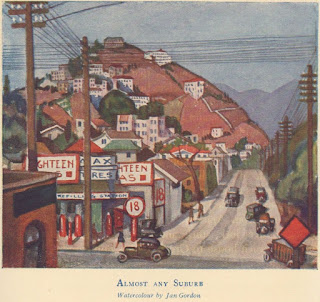Who was Harraden Scar in Jan Gordon's "A Girl in the Art Class"?
"Harraden Scar" is an important character in "A Girl in the Art Class" (1927) by Jan Gordon. He is a friend of Raymonde Carpenter (Cora Josephine Turner) in Paris: "The acquaintances of the Art schools suddenly began to ripen into friendships ; I began to be invited to their studios by Mrs. Sovil, by Harraden Scar," and others.
When I first read the book, I was strongly reminded of Walter Sickert (1860-1942) and, checking the details (discussed below), feel more confident than ever that Sickert is very probably the inspiration for the character Scar.
In 1899 Sickert was divorced from his first wife (the daughter of a liberal politician) and for six years then lived in Venice, Dieppe and Paris. He taught at the Westminster Institute, started a school for etching, and had exhibitions at London and Paris galleries. He is said to have exhibited at at least 15 Paris shows between 1900 and 1909.
By the time he painted "What Shall We Do for the Rent?" (later "Camden Town murder" ) in ca 1908, Sickert had already been painting lugubrious female nudes on beds for a number of years, and he continued to do so, challenging conventions and stating that "the modern flood of representations of vacuous images dignified by the name of 'the nude' represents an artistic and intellectual bankruptcy."
In "A Girl in the Art Class," Harraden Scar is also a painter of nudes. Raymonde Carpenter's father is shocked when Scar's wife says, "Harraden has been doing a lot of nudes out of his head. Some of them are the oddest creatures. I give them all names. This one is Augustine." "Augustine" was a "modern nude, after Matisse, drawn with the end of a match in curves, fat, grotesque and distorted. Besides, she wasn't a nude, she was a naked girl. Scar had scorned the prudery of the depilatory."
Raymonde Carpenter judged Mr. Scar "to be a man of some critical faculty, keen intelligence, good colour sense, but with little power of drawing."
"He was married and lived with his wife in a tiny studio in the Rue Foreteau. I was amazed that in so exiguous a place an English married couple could exist, sleeping, living, working, preparing meals, even doing the weekly wash there, though the studio was as clean as one could wish for."
Scar was enjoying some success since, "in Paris the fringes of post-impressionism were already arousing interest, especially amongst the Jews, and Harraden was finding a few speculative buyers amongst the Scandinavian and American travellers. He had made one or two good social friends who dragged other people to his studio, where they were frequently subjugated by his eloquence if not always by his Art. In fact, Scar was on the edge of becoming a fashion."
In the book, the father of Mr. Scar had been a painter ".... Mr. Scar, senior, having a valuable connection amongst the English landed gentry, had hoped that his son would carry on the business at the old sign, and had planned to leave the practice to him." Walter Sickert's father was also a painter, but seems to have argued against Sickert following the trade, leading him to initially take up a career in acting.
Raymonde Carpenter would meet up with Harraden Scar at the circus in order to practise drawing animals. On one occasion they met a French artist ,"President de la Société des Peintres Zoologiques," who invited them to his studio to see his work. "Harraden Scar at last found the word which could satisfy his conscience with courtesy. 'C'est extraordinaire,' he repeated, 'c'est vraimoent extraordinaire." Which the president took as a heartfelt compliment."
"Mr. Arnold [Jan Gordon] was not impressed by the work of Mr. Scar. Harraden was then in a transition phase of Gauguin modified by Matisse, with hints of the Signac pointillist school still clinging visibly. There were pointillist sketches on the walls, and works in which pointillism was modified by Van Gogh." Walter Sickert is also known to have adopted pointillism for a time.
"Harraden Scar was an acute reasoner, but had one defect, his mind worked doubly as fast as his tongue could go, so that in order not to lose a new thought he would leave the old one only half expressed in the exposition." "Seems nice in his way," said Arnold of Scar, "but a pure lunatic."
All in all, "Harraden Scar" seems to be a convincing portrait of Walter Sickert, with the usual application of Jan Gordon's "fictional process," building upon the historical facts.
Reference:
Walter Sickert, ‘The naked and the Nude’, New Age, 21 July 1910, pp. 276–7. Sickert was careful to distinguish between ‘naked’ (with a lowercase ‘n’) and ‘Nude’ (with an uppercase ‘N’) to underline the elevated status accorded to the academic Nude.
When I first read the book, I was strongly reminded of Walter Sickert (1860-1942) and, checking the details (discussed below), feel more confident than ever that Sickert is very probably the inspiration for the character Scar.
Walter Sickert, 1911, by George Charles Beresford (public domain).
In 1899 Sickert was divorced from his first wife (the daughter of a liberal politician) and for six years then lived in Venice, Dieppe and Paris. He taught at the Westminster Institute, started a school for etching, and had exhibitions at London and Paris galleries. He is said to have exhibited at at least 15 Paris shows between 1900 and 1909.
By the time he painted "What Shall We Do for the Rent?" (later "Camden Town murder" ) in ca 1908, Sickert had already been painting lugubrious female nudes on beds for a number of years, and he continued to do so, challenging conventions and stating that "the modern flood of representations of vacuous images dignified by the name of 'the nude' represents an artistic and intellectual bankruptcy."
In "A Girl in the Art Class," Harraden Scar is also a painter of nudes. Raymonde Carpenter's father is shocked when Scar's wife says, "Harraden has been doing a lot of nudes out of his head. Some of them are the oddest creatures. I give them all names. This one is Augustine." "Augustine" was a "modern nude, after Matisse, drawn with the end of a match in curves, fat, grotesque and distorted. Besides, she wasn't a nude, she was a naked girl. Scar had scorned the prudery of the depilatory."
Raymonde Carpenter judged Mr. Scar "to be a man of some critical faculty, keen intelligence, good colour sense, but with little power of drawing."
"He was married and lived with his wife in a tiny studio in the Rue Foreteau. I was amazed that in so exiguous a place an English married couple could exist, sleeping, living, working, preparing meals, even doing the weekly wash there, though the studio was as clean as one could wish for."
Scar was enjoying some success since, "in Paris the fringes of post-impressionism were already arousing interest, especially amongst the Jews, and Harraden was finding a few speculative buyers amongst the Scandinavian and American travellers. He had made one or two good social friends who dragged other people to his studio, where they were frequently subjugated by his eloquence if not always by his Art. In fact, Scar was on the edge of becoming a fashion."
In the book, the father of Mr. Scar had been a painter ".... Mr. Scar, senior, having a valuable connection amongst the English landed gentry, had hoped that his son would carry on the business at the old sign, and had planned to leave the practice to him." Walter Sickert's father was also a painter, but seems to have argued against Sickert following the trade, leading him to initially take up a career in acting.
Raymonde Carpenter would meet up with Harraden Scar at the circus in order to practise drawing animals. On one occasion they met a French artist ,"President de la Société des Peintres Zoologiques," who invited them to his studio to see his work. "Harraden Scar at last found the word which could satisfy his conscience with courtesy. 'C'est extraordinaire,' he repeated, 'c'est vraimoent extraordinaire." Which the president took as a heartfelt compliment."
"Mr. Arnold [Jan Gordon] was not impressed by the work of Mr. Scar. Harraden was then in a transition phase of Gauguin modified by Matisse, with hints of the Signac pointillist school still clinging visibly. There were pointillist sketches on the walls, and works in which pointillism was modified by Van Gogh." Walter Sickert is also known to have adopted pointillism for a time.
"Harraden Scar was an acute reasoner, but had one defect, his mind worked doubly as fast as his tongue could go, so that in order not to lose a new thought he would leave the old one only half expressed in the exposition." "Seems nice in his way," said Arnold of Scar, "but a pure lunatic."
All in all, "Harraden Scar" seems to be a convincing portrait of Walter Sickert, with the usual application of Jan Gordon's "fictional process," building upon the historical facts.
Reference:
Walter Sickert, ‘The naked and the Nude’, New Age, 21 July 1910, pp. 276–7. Sickert was careful to distinguish between ‘naked’ (with a lowercase ‘n’) and ‘Nude’ (with an uppercase ‘N’) to underline the elevated status accorded to the academic Nude.
Drawing by Walter Sickert in Coterie, September 1919.
This same edition contains a pair of drawings by Cora Josephine Gordon.





Comments
Post a Comment